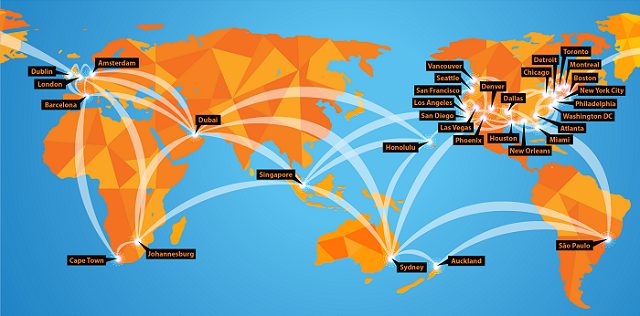5 Strategies to Personalize Your Upsells and Cross-Sells
Would you like fries with that?
Research shows that upsells and cross-sells count for more than 30% of eCommerce revenue.
As shoppers, we are accustomed to the standard sales tactics. Companies have more products. And they want us to buy more.
The problem arises when brands force us to buy services we don’t want, and quite frankly, don’t need.
But SaaS companies face a set of unique challenges. Their profitability hinges on low churn rates and recurring revenue.
However, that’s no excuse to take the nickel-and-dime approach. SaaS businesses can enhance customer value.
How? Through upselling and cross-selling.
And not by taking the traditional path. I’m talking about: personalized upgrades that will add to the customer’s experience.
Let’s explore five techniques to customize your upsells and cross-sells.
1. Focus on Timing & Limitations
Especially in the SaaS market, you want customers coming back. It’s up to your team to not only provide value, but also to give value at the right time.
Start with who you know. Marketing Metrics reports that it’s 50% easier to sell to existing customers than to new prospects.
Consider it a natural next step in the customer lifecycle. Use data to identify what problems your current customers want solved.
Then, demonstrate to consumers how your additional services can help them achieve greater success.
Upselling to customers at the right time matters. For instance, don’t sell a blog management platform to a company who recently outsourced these duties.
To turn a single sale into multiple purchases, be well-acquainted with your consumers’ needs.
Also, try limiting your product’s usage to create extra upsell opportunities.
Gareth Goh at InsightSquared agrees, “People, by nature, want what they can’t have. If they have reached the limits in terms of how much they can use your product, their want and need for more of it will inevitably spike.”
Placing customized limitations on your services gives consumers a taste of what you have to offer. Figure out how much (or how little) will entice each buyer.
Once they notice the value your services provide, customers will ask for more. And that’s your chance to upsell.
2. Add User-Generated Content
Building customer trust is one of the main issues plaguing eCommerce businesses. A typical shopper’s mind generates skeptical questions, like: “Are their products really good?” or “Will they return my money back if I’m dissatisfied?”
That’s why genuine customer reviews bring value to the purchasing process. People want to hear an impartial opinion, not an advertisement.
User-generated content offers brands the opportunity to supply that social proof. Rather than spending big bucks on paid promotion, let your customer’s social media content encourage cross-sells.
Yotpo’s data scientists “found that from reviews shared to social, the conversion rate is an average of 40% higher for Facebook, 8.4 times higher for Twitter and 5.3 times higher for LinkedIn.”
UGC strengthens the trust factor. To shorten the sales cycle, provide customers with reviews of cross-sell items. A section labeled “What People Are Saying About Product X” will work well.
To deepen the personalization, filter the reviews that will resonate with the customer’s interests. For example, if the customer’s past purchase behavior relied on product quality, offer them specific reviews highlighting this concern.
Let the data determine your UGC selection and that will increase your likelihood of a cross-sell purchase.
3. Offer Personal Product Recommendations
Examine the historical and affinity data of your customers. Then, offer product recommendations based on these trends.
Words matter. So, speak directly to the consumer. How your brand crafts the cross-sell message will dictate how the shopper responds.
Customized messaging is powerful. As humans, we pay attention when someone says our name. That’s one reason why Starbucks’ baristas ask for our names with each order.
At a minimum, your cross-sell language should communicate on an individual level. Use words like: you, your, and yours. This way the shopper can imagine themselves with the product.
Here is an example from Buffer:
To kick it up a notch, make it more personable. Identify the shopper by name. This is how Bodybuilding.com does it:
4. Consider Pricing Options
Learn your customer’s price sensitivity. If a customer bought a $100 item, they may not be willing to purchase a $1,000 product right after.
But don’t shy away from trying upsells with payment plans.
Kissmetrics and CrazyEgg co-founder Neil Patel suggests, “offering your customers an additional product for six monthly payments of $47 instead of a one-time payment of $282.”
Bundling is another cross-selling strategy. It’s the science of delivering à la carte items into a perfect package that will delight customers. To shoppers, it translates into a bargain.
Even though bundling doesn’t require learning the theory of relativity, it does require a few best practices to follow.
For example, products within the bundle should also be sold separately. If the customer can only get the item within the bundle, then it’s a single product, rather than a package deal. Meaning the consumer has no choice and receives no real perceived bargain.
Recommend items that will fit your consumer’s current budget, not your lofty sales goals.
5. Remember Customer Support Interactions
Can your support team spot upsell opportunities?
If so, they can meet the customer’s needs with product offers. However, don’t abuse this outreach strategy. Give honest product suggestions.
Disclaimer: All customer support interactions don’t equal a sales opportunity.
The purpose of a support team is to solve the customer’s problem. As your business grows and problems arise, team members may recognize patterns that can eventually be resolved through your company’s services.
Groove’s Head of Marketing Len Markidan suggests two conditions to sell in a support situation:
- The customer is happy with your service. – Never sell a solution to an angry customer. It only makes them angrier, and your brand looks worse.
- The customer’s unmet need can be solved by you. – After solving the customer’s initial problem, did the interaction reveal that more value could be delivered?
Before Groove ended its Live Chat app, they offered it as a solution to help their customers prevent a constant flow of emails. This typical upsell solved a problem and added value to the customer.
In the example above, you can see how Mo related to the customer’s concerns. Her response was customized to fit this specific consumer’s needs. She stated the person’s name, created a sense of understanding, and offered to set up a free 14-day trial.
Monitor your shopper’s needs. Your #1 priority is to assist them with their problems. Then, customize ways to insert upsells into conversations that will help everyone involved.
Personalize to Sell More
Upselling and cross-selling are timeless marketing approaches. If used correctly, they can boost revenue growth and increase customer lifetime value.
To give your SaaS brand a sales reboot, incorporate personalization into your strategy. Amplify user-generated content and consider your pricing when bundling.
Customize. Upsell. Sell more.
About the Author: Shayla Price lives at the intersection of digital marketing, technology and social responsibility. Connect with her on Twitter: @shaylaprice





























No comments